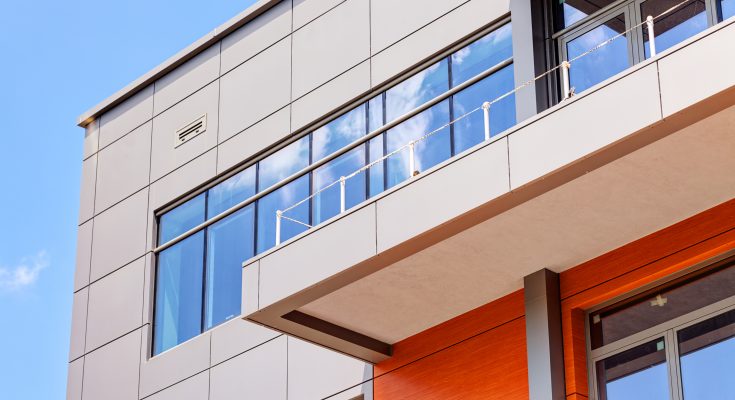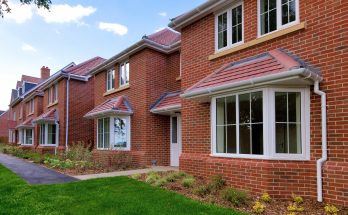Housing Secretary unveils a 5-point plan which will provide reassurance to homeowners and confidence to the housing market.
Hundreds of thousands of leaseholders will be protected from the cost of replacing unsafe cladding on their homes, as Housing Secretary Robert Jenrick unveiled a five-point plan which will provide reassurance to homeowners and bring confidence to the housing market.
Five-point plan to bring an end to unsafe cladding
- Government will pay for the removal of unsafe cladding for leaseholders in all residential buildings 18 metres and over (6 storeys) in England
- Generous finance scheme to provide reassurance for leaseholders in buildings between 11 and 18 metres (4 to 6 storeys), ensuring they never pay more than £50 a month for cladding removal
- An industry levy and tax to ensure developers play their part
- A world-class new safety regime to ensure a tragedy like Grenfell never happens again
- Providing confidence to this part of the housing market including lenders and surveyors
With an unprecedented £5 billion investment in building safety, including £3.5 billion announced today (10 February 2021), the Housing Secretary confirmed to the House of Commons that the government will fully fund the cost of replacing unsafe cladding for all leaseholders in residential buildings 18 metres (6 storeys) and over in England.
This will ensure funding is targeted at the highest risk buildings in line with longstanding independent expert advice and evidence, with Home Office analysis of fire and rescue service statistics showing buildings between 18 and 30 metres are four times as likely to suffer a fire with fatalities or serious casualties than apartment buildings in general.
Lower-rise buildings, with a lower risk to safety, will gain new protection from the costs of cladding removal with a generous new scheme offered to buildings between 11 and 18 metres. This will pay for cladding removal – where it is needed – through a long-term, low interest, government-backed financing arrangement.
Under the scheme, no leaseholder will ever pay more than £50 a month towards the removal of unsafe cladding. This will provide reassurance and security to leaseholders, and mortgage providers can be confident that where cladding removal is needed, properties will be worth lending against.
The government is working with industry to reduce the need for EWS1 forms, preventing leaseholders from facing delays and allowing hundreds of thousands of homes to be sold, bought, or re-mortgaged once again.
The Housing Secretary today announced plans to introduce a ‘Gateway 2’ developer levy. The proposed levy will be targeted and apply when developers seek permission to develop certain high-rise buildings in England.
In addition, a new tax will be introduced for the UK residential property development sector. This will raise at least £2 billion over a decade to help pay for cladding remediation costs. The tax will ensure that the largest property developers make a fair contribution to the remediation programme, reflecting the benefit they will derive from restoring confidence to the UK housing market. The government will consult on the policy design in due course.
The government will protect future generations from similar mistakes by bringing forward legislation this year to tighten the regulation of building safety and to review the construction products regime to prevent malpractice arising again.
Today’s measures will mean people living in homes which they have been prevented from selling, or re-mortgaging, through no fault of their own, will now be able to move on with their lives. “Our landmark intervention will make homes safer and free those who did the right thing – saving for years to get on the property ladder – to enjoy the homes in which they have invested so much,” Housing Secretary Rt Hon Robert Jenrick MP said.
The Grenfell tragedy laid bare failings in the building industry dating back 30 years. Today’s announcement is a further step by the government to bring about the biggest changes to building safety in a generation, ensuring people are safe and feel safe in their own homes.
The new measures build on steps already taken to support leaseholders, including £1.6 billion of funding to remediate unsafe cladding, the £30 million Waking Watch fund to help end unfair and excessive costs and new legislation in the Building Safety Bill which will ensure homes are made and kept safer in future.
Further guidance on building safety
The Independent Expert Advisory Panel (the Expert Panel) has provided advice on the measures building owners should take to ensure their buildings are safe.
Government supports the guidance produced by RICS as an appropriate, risk-based and proportionate basis on which to proceed with valuation assessments, in line with the building safety Consolidated Advice Note published in January 2020. In addition government will work with industry to ensure consistency between the RICS guidance, the forthcoming BSI Publicly Available Specification 9980 for cladding fire risk assessment, the imminent guidance on conducting Fire Risk Assessments as part of the clarified Fire Safety Order and the regulatory requirements flowing from the forthcoming Building Safety Bill.
The devolved administrations will receive additional funding through the Barnett formula, except where new departmental spending is funded by an England-only levy (where the devolved administrations can instead implement their own levies should they choose to do so).
Image by Vladimir Nenezic / Adobe Stock


